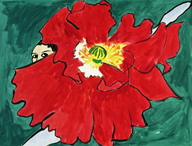Learning Commons Philosophy
The Learning Commons’ philosophy is built upon encouraging active engagement with information in all of its formats. Our space is designed to foster collaborative inquiry by creating new opportunities for community interaction; the space assists students by providing a variety of support services.
Daniel M. Soref Charitable Trust
The Daniel M. Soref Charitable Trust’ s generous gift of $1.75 million dollars along with $4.9 million from the State of Wisconsin and donations from the Friends of the Golda Meir Library Board and many others provided the funds for the Library’s renovation.
Daniel M. Soref was involved in the family business, Milwaukee’s Master Lock Co., and served as Secretary of the company. His father Samuel M. Soref was Chairman of the Board and co-founder along with his brother Harry E. Soref, Daniel’s uncle.
Master Lock, established in 1921, earned its reputation for quality locks from Harry E. Soref’s inventions. As a security consultant for the military during World War I, he invented a special padlock used to protect military equipment. Master Lock grew to become the largest manufacturer of padlocks in the country, with almost universal public recognition of the brand name. The Soref family sold the company to American brands in 1970.
The Daniel M. Soref Charitable Trust was established in August 2001 upon the death of Daniel M. Soref.
Upholding its philosophy of enhancing the community, the Trust has given significant gifts to other area organizations. These organizations include the Milwaukee Public Museum’s Daniel M. Soref Planetarium, the Great Milwaukee Boys & Girls Club, Big Brothers Big Sisters of Metro Milwaukee, and the Milwaukee Jewish Federation.
Artwork

In November 2008, UWM Libraries received a major gift from the Kohler Foundation. The Foundation gave the Library 33 works of art by celebrated Wisconsin artists Ruth Grotenrath (1912-1988) and Schomer Lichtner (1905-2006). They were contemporaries of Fritz Gerlach, another Milwaukee artist and philanthropist. All three artists shared a joie de vivre (a joy of living) and love for Milwaukee, which is very evident in their paintings.
Grotenrath and Lichtner married in 1934. Grotenrath became known for her intimate still lifes of everyday objects. Lichtner’s art, including many paintings with his trademark Holstein cows and elegant ballerinas, gained a national reputation. Both artists taught art at UWM during their careers. In addition, the Libraries’ Archives holds a collection of their correspondence and other materials, including a 1978 interview with Grotenrath.
Ten of these artworks are on exhibit in the Learning Commons. The others have been hung elsewhere in the library. The Koeppen-Gerlach Foundation provided grant money for museum-quality framing for the paintings in this collection.